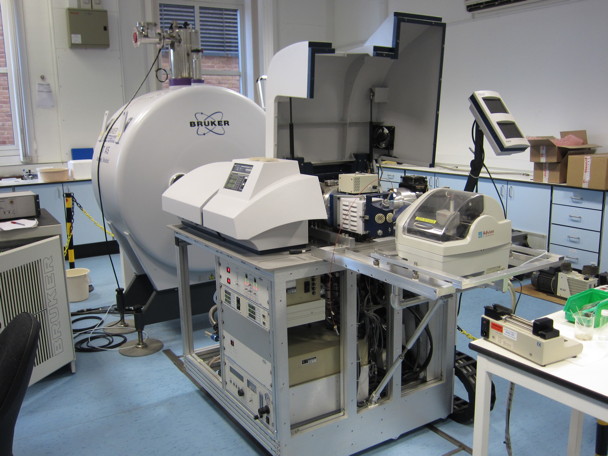

Investigating the role of ligand electronics on stabilizing electrocatalytically relevant low-valent Co(I) intermediates. Complete electron economy by pairing electrolysis with hydrogenation. Sulfonamide synthesis through electrochemical oxidative coupling of amines and thiols. Dehydrogenative reagent-free annulation of alkenes with diols for the synthesis of saturated O-heterocycles. Palladium-catalyzed C(sp 3)–H oxygenation via electrochemical oxidation. Electricity-driven asymmetric Lewis acid catalysis. Photoelectrocatalytic arene C–H amination. Electrochemical cobalt-catalyzed C–H oxygenation at room temperature. Scalable and sustainable electrochemical allylic C–H oxidation. Cooperative electrocatalytic alcohol oxidation with electron-proton-transfer mediators. Scalable and safe synthetic organic electroreduction inspired by Li-ion battery chemistry. Metal-catalyzed electrochemical diazidation of alkenes. Using physical organic chemistry to shape the course of electrochemical reactions. Electrochemical oxidative cross-coupling with hydrogen evolution: a green and sustainable way for bond formation. Electrochemical strategies for C–H functionalization and C–N bond formation. Use of electrochemistry in the synthesis of heterocyclic structures. Organic electrosynthesis: from laboratorial practice to industrial applications. Synthetic organic electrochemical methods since 2000: on the verge of a renaissance. Spectroscopically characterized synthetic mononuclear nickel–oxygen species. Activation of small molecules at nickel(I) moieties. Lessons from isolable nickel(I) precursor complexes for small molecule activation.

Oxygen activation by mononuclear Mn, Co, and Ni centers in biology and synthetic complexes. Native functionality in triple catalytic cross-coupling: sp 3 C–H bonds as latent nucleophiles. Base-free nickel-catalysed decarbonylative Suzuki–Miyaura coupling of acid fluorides.

Remote carboxylation of halogenated aliphatic hydrocarbons with carbon dioxide. Juliá-Hernández, F., Moragas, T., Cornella, J. A general alkyl-alkyl cross-coupling enabled by redox-active esters and alkylzinc reagents. Recent advances in homogeneous nickel catalysis. Synthesis, characterization and reactivity of non-heme 1st row transition metal-superoxo intermediates. Structures of transition states in metal-mediated O 2-activation reactions. Oxygen complexes of nickel and palladium. Activation of dioxygen at a Lewis acidic nickel(II) complex: characterization of a metastable organoperoxide complex. Reductive O 2 binding at a dihydride complex leading to redox interconvertible μ-1,2-peroxo and μ-1,2-superoxo dinickel(II) intermediates. Heterogeneous binding of dioxygen: EPR and DFT evidence for side-on nickel(II)–superoxo adduct with unprecedented magnetic structure hosted in MFI zeolite. O–O bond activation in heterobimetallic peroxides: synthesis of the peroxide and its conversion into a bis(μ-hydroxo) nickel zinc complex. A ‘side-on’ superoxonickel complex with a square-planar tetracoordinate nickel(II) center and its conversion into. Yao, S., Bill, E., Milsmann, C., Wieghardt, K. A monomeric nickel–dioxygen adduct derived from a nickel(I) complex and O 2. Nucleophilic versus electrophilic reactivity of bioinspired superoxido nickel(II) complexes. Mononuclear nickel(II)-superoxo and nickel(III)-peroxo complexes bearing a common macrocyclic TMC ligand. Geometric and electronic structure and reactivity of a mononuclear ‘side-on’ nickel(III)–peroxo complex. Quercetin 2,4-dioxygenase activates dioxygen in a side-on O 2–Ni complex. Nickel superoxide dismutase structure and mechanism. We anticipate that this strategy will inspire the development of efficient nickel-catalysed aerobic oxygenations and promote the exploration of transition-metal-based oxidation chemistry in combination with electrochemistry.īarondeau, D. Here, we report a strategy to enable catalytic oxygenation with a simple Ni( ii)–bipyridine complex in which electrochemistry is employed to drive the cascade-activation process for the generation of both active Ni( ii)–peroxo species and O 2 for the subsequent oxygenation reaction. The typical inertness of Ni( ii) complexes toward O 2 poses a considerable challenge for their application in catalytic aerobic oxygenation. Thus, various nickel–dioxygen complexes have been prepared for biomimetic oxygenation reactions over the past 50 years, but they have often been used stoichiometrically rather than catalytically. Nickel has been found in some metalloproteins that execute catalytic aerobic oxygenation reactions in which nickel–dioxygen species are proposed as the key catalytic species.


 0 kommentar(er)
0 kommentar(er)
